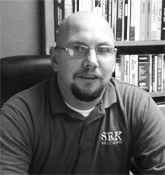 | Chris Cotter is the General Manager of SEK Heat & Air, Inc. in Pittsburg, KS. Chris has worked in the HVAC industry for 15 years and first joined SEK in 1996. SEK has been serving residential and commercial customers in Kansas, Missouri, and Oklahoma since 1994, providing sales and service of Conventional and Geo-thermal systems. Call Chris today to learn more about heating and cooling your home in a clean and efficient way at 620-215-3124, by e-mail at Info@SekHeatandAir.com, or visit www.SekHeatandAir.com. |
Heating & Air Conditioning
2012-08-02 08:13:26
Problems cooling upstairs
Q- I am looking for advice on a heating and cooling problem. Here is the issue: We have a two story home. In the summer, the upstairs is significantly hotter than downstairs, and in winter, the downstairs is significantly colder than upstairs. We have a 7-year-old single 4-ton, single zone HVAC system. What could be the problem and what would you suggest we do to fix it?
A- Your problem is common, and very likely, there is more than one factor contributing to the uneven cooling.
Heating and cooling a home is actually much more complex than most people realize, and many variables play a role in the effectiveness of your HVAC system. Your best bet is to bring in a technician that can evaluate the factors and suggest options based on your needs.
Here are just a few of the variables that can contribute to the problem you have described:
• Having single pane windows
• Too small of a system
• Not enough ventilation
There are several ways to solve the problem:
• Put in two systems, one for upstairs and one for downstairs. This is probably the most expensive option. This would give you the advantage of cooling or heating each level specifically. However, if one breaks, then you are left without heating and cooling in that area.
• Next is put in a zoning system. This option is less expensive than putting in two complete systems, and even less when it is being put in new structures. The advantage is being able to direct the full capacity of the cooling system to the area that needs it when it needs it.
• Thirdly, use two wireless thermostats. In this case, you push a button on the thermostat in the area that you are using and it will heat or cool according to that thermostat. The problem with that option is that if there are other significant issues with airflow or insulation the system may simply continue to run trying to overcome that deficit.
• Finally, fix existing airflow and insulation problems. Depending on the problem this could cost much less, or much more than the other options.
Before you spend a ton of money trying to figure it out, have a technician lay out your options and go from there. The problem could be a simple fix.


